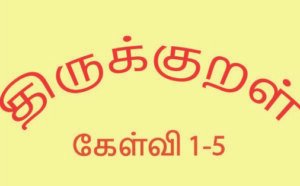Deepavali
We Indians celebrate so many festivals throughout the year, but Deepavali has a special place in our hearts, doesn’t it? If Navratri is the celebration of the victory of good over evil, then Deepavali is its continuation.
It falls roughly between October to November. Deepavali is celebrated by Hindus all over India. It is a vibrant holiday. People clean their homes to prepare for the holiday, they prepare many festive dishes and buy new clothes. This is also a time of greeting and exchanging gifts with friends and family.
Once again, India’s diversity is seen in the many ways Deepavali is celebrated in different parts of the country. In the south, Tamil Nadu, Andhra, Telangana, and Karnataka celebrate Diwali for just one day: the eve of Deepavali, Naraka Chaturdasi, and the following morning, which is when the phase of the new moon or Amavasya sets in. According to the lunar calendar for Telugu, Marathi, Gujarati, and Kannada speaking people, Deepavali Amavasya, or the new moon, falls on the last day of the Ashwin month. For the north Indians, the Amavasya falls on the first day of the Karthik month. The north Indian states celebrate Deepavali for 3 or 5 days. The first day is dhan teras, kali choudas, Deepavali, bali pratipada, and bhai dhuj.
Why is Deepavali celebrated? Well, it depends on which part of India you are from. In north India, it is a celebration of the return of Lord Rama to Ayodhya after 14 years of exile in the forest. After the abduction of Sita and the subsequent war when he defeats and kills Ravana, Lord Ram returned to rule his kingdom on the day of Deepavali. His subjects decorated the city with rangolis and lighted rows and rows of earthen lamps to welcome him.
In the south, Deepavali is the celebration of the asura Naraka. Narakasura was the son of Mahavishnu and Bhudevi. He was born when Mahavishnu took the form of Varaha (wild boar) and rescued Mother Earth from Hiranyakashipu. After the Varaha avatar, Mahavishnu took the avatars of Narasimha, Parashurama, Balarama, and Krishna. During this time, Naraka, born in the Varaha avatar, gained such powers that nobody could defeat him. His atrocities were unbearable. He was ruling from Pragjyotisha (present-day Orissa). Finally, Lord Vishnu, as Krishna, fought Narakasura with the help of Satyabhama. Satyabhama killed Narakasura. As a result of a boon given to Narakasura, Deepavali is celebrated to rejoice in his death.
Let us look at how we celebrate Deepavali across India:
The first day of Deepavali is celebrated as Dhan Teras in the north. Dhan Teras is about dhan i.e., wealth and teras, which means thirteen—for the thirteenth day of the waning phase of the moon. On this day, people worship the goddess Lakshmi; they buy new ornaments as a way to gather wealth. This is a really important day for gold merchants in India! Kubera, the treasurer of the Devas, is also worshipped on this day.
Kali choudas is celebrated on the same day as Naraka Chaturdashi. In the East, Kali Choudas is said to be the day that evil is driven out. Kali is worshipped on this day. In the south, Lamps are lit all around the house on Naraka Chaturdashi.
The following morning, on Amavasya, people take an oil bath before sunrise and offer tharpan (water and till or sesame) to their ancestors. This is the day of Deepavali. In the north, people light lamps all around the house in the evening.
Bali Pratipada, is the fourth day of Diwali. Maharashtrians believe that Chakravarti Mahabali (the grandson of Prahlada) after he was liberated by Vamana, Vishnu’s avatar, visits the earth on this day. Large Rangoli designs are drawn in homes, and people wear new clothes and exchange sweets and gifts. The merchants and traders start their new accounting year on Bali Pratipada.
Bhai Dhuj, the last day of Deepavali, is observed by all North Indians. Brothers visit their sisters with gifts. The sisters treat them to a feast. It is a day of bonding between siblings.
We believe that taking a bath before sunrise is the equivalent of bathing in the Ganga and that goddess Lakshmi is present in the oil on this occasion. Hence the compulsory oil bath.
Whatever the mode of celebration, taking an oil bath before sunrise, wearing new clothes, offering special prayers, eating early breakfast, visiting temples, friends, and relatives, lighting earthen lamps all around the house, and bursting firecrackers are common practices.
Along with the religious aspect, there is another reason to go all out and enjoy the festivities. With the change in season, it gets colder and darker. What a wonderful way to celebrate a special night with rows and rows of lights! As we come together with friends and family, we bring cheer into our lives.
Sikhs celebrate the day of Diwali as Bandi Chor Diwas, as it is the day of a historic event. The Mughal emperor Jehangir had imprisoned the sixth Guru, Guru Hargobind. On Diwali, Guru Hargobind was released along with 52 other kings. To commemorate Guru Hargobind’s liberation, Sikhs celebrate the day as Bandi Chor diwas. They pray at the Gurudwaras, light lamps, and burst firecrackers.
Did you know Jains celebrate Deepavali too? It is the day that Lord Mahavir, the last Tirtankara of Jainism, attained Nirvana. Jains celebrate the festival by fasting, singing hymns in praise of Lord Mahavir, and lighting lamps.
Whatever the reason behind the Deepavali celebrations in your family, enjoy the festivities, don’t forget to exchange gifts and greetings with your loved ones, and be safe with the firecrackers.
Click here for more on Deepavali:





